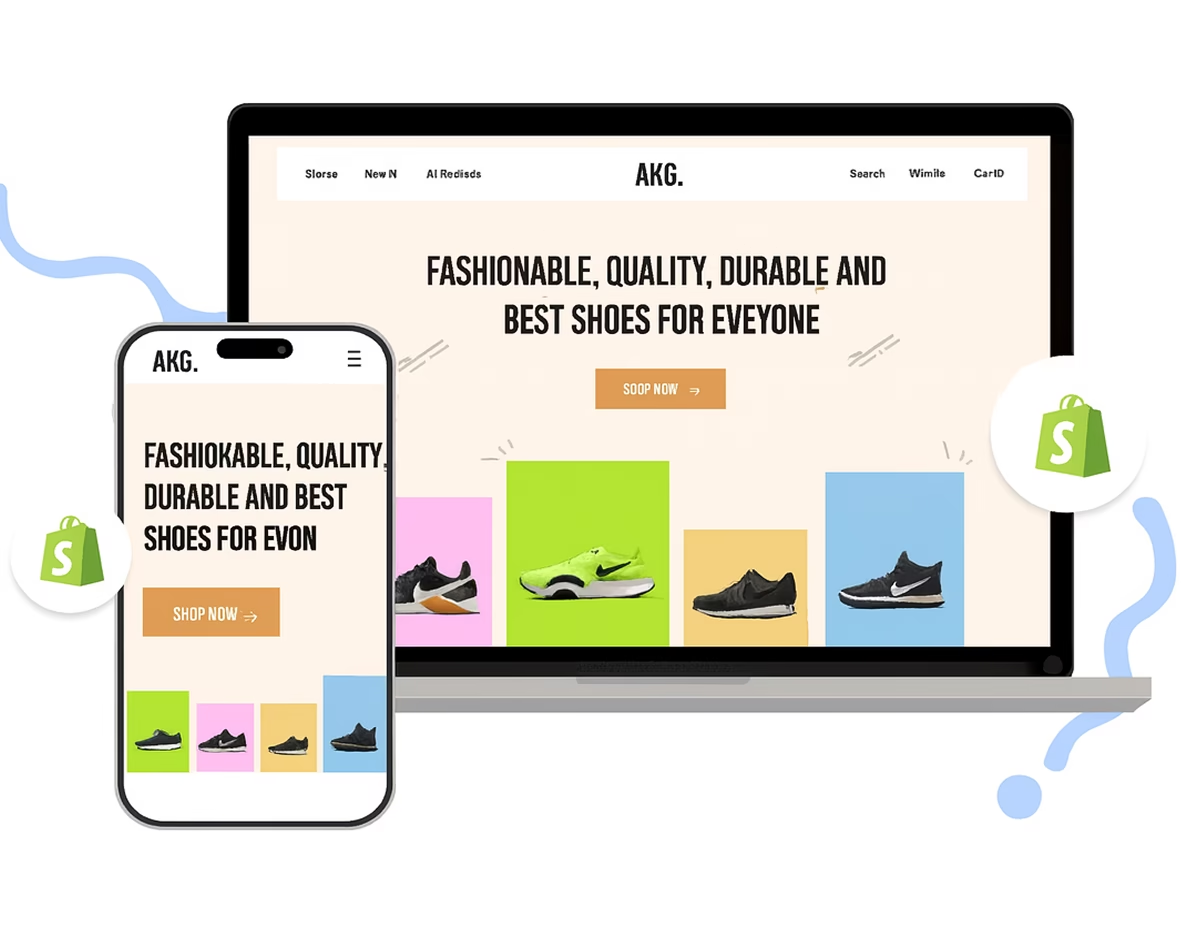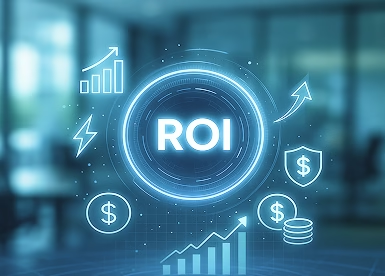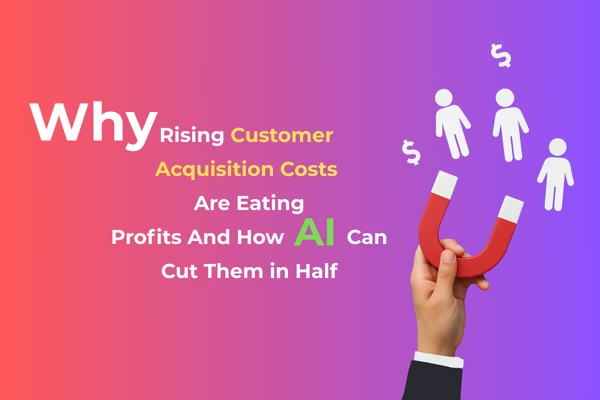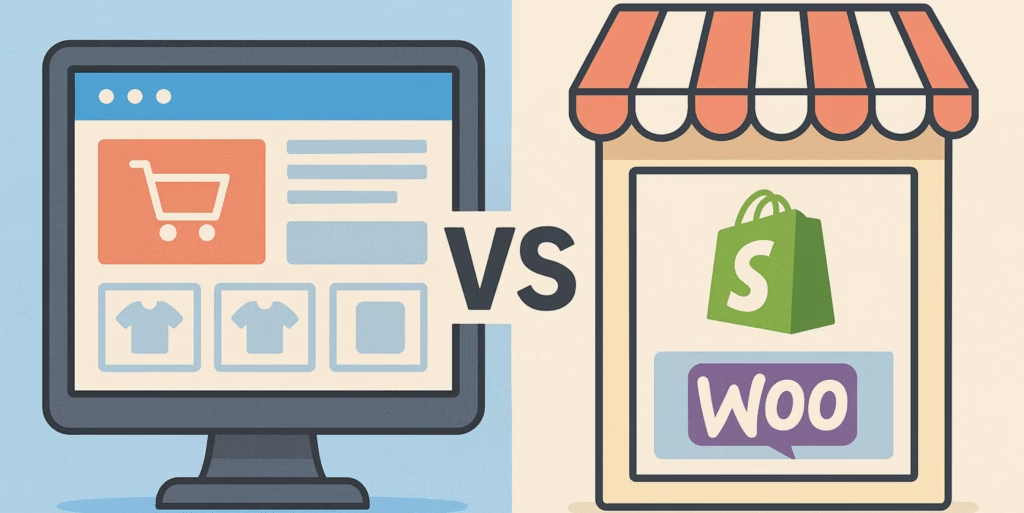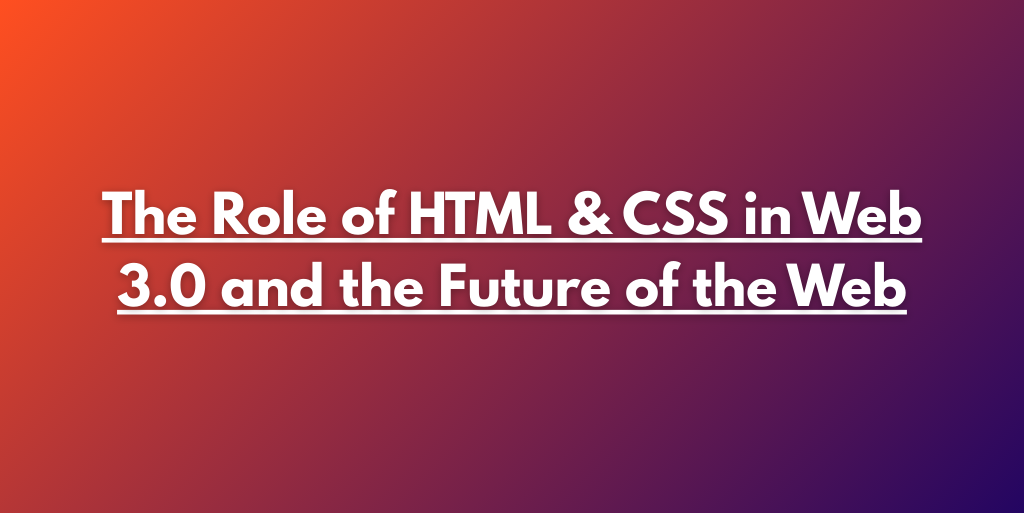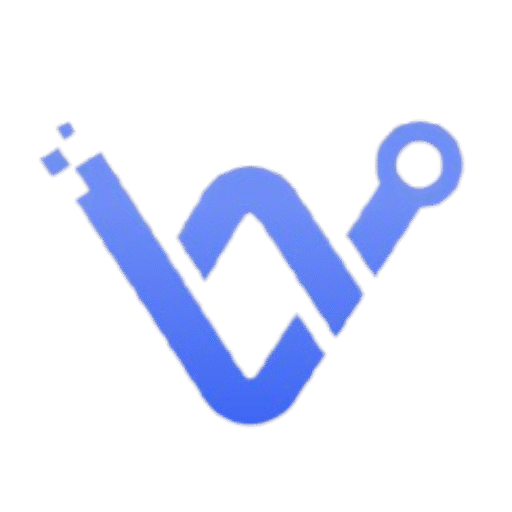Quick Summary
Choosing the right SaaS for eCommerce platform in 2025 can make or break your online business. This blog explores why modern SaaS platforms are the smart choice, compares top solutions, highlights must-have features, and shares real-world examples to help you make an informed decision.
Table of Contents
- Introduction
- Why SaaS eCommerce Solutions Are Essential in 2025
- SaaS vs Open Source vs Custom Build: Which Works Best?
- Top SaaS eCommerce Platforms to Watch in 2025
- 7 Essential Features Your SaaS eCommerce Platform Must Have
- Emerging Trends in SaaS eCommerce Platforms
- Ready to Scale? Choose the Right SaaS Partner
- Frequently Asked Questions (FAQs)
Introduction
Running an eCommerce business used to require months of setup, expensive servers, and a dedicated IT team. Today, SaaS eCommerce solutions let you launch fast, scale effortlessly, and reduce costs.
With global online sales projected to surge, choosing a SaaS for eCommerce platform is no longer optional—it’s essential for brands that want speed, flexibility, and long-term growth.
Why SaaS eCommerce Solutions Are Essential in 2025
Modern SaaS ecommerce platforms deliver real business value by combining flexibility, innovation, and scalability. Here’s why they are increasingly preferred by ecommerce businesses worldwide:
- Lower Costs, Higher ROI
Subscription-based SaaS eCommerce solutions reduce upfront infrastructure expenses, ongoing maintenance, and IT overhead. You get hosting, support, and upgrades included—allowing for a faster return on investment.
- Effortless Scalability
From small sales volumes to thousands of daily transactions, most popular SaaS platforms scale automatically. No downtime, no hardware upgrades, no manual adjustments. - Continuous Innovation
SaaS ecommerce providers handle updates, feature releases, and security patches. Your team always works with the latest tools and trends, without extra effort. - Faster Launch Times
Pre-built templates, integrations, and workflows let your ecommerce business go live quickly. Test, pivot, and expand faster than ever. - Robust Security and Compliance
Leading modern SaaS platforms provide SSL, PCI-DSS compliance, and GDPR-ready features, protecting sensitive customer information. - Focus on Growth
Let your internal team concentrate on marketing, product, and customer experience while your SaaS ecommerce platform handles infrastructure. - Plug-and-Play Integrations
Most SaaS eCommerce platforms offer seamless integration with CRM, ERP, payment gateways, and marketing tools—building a powerful commerce stack without custom development.
SaaS vs Open Source vs Custom Build: Which Works Best?
| Aspect | SaaS | Open Source | Custom Build |
| Initial Cost | Low (subscription-based) | Medium (setup + customization) | High (development from scratch) |
| Time to Launch | Fast | Medium | Slow |
| Ownership & Control | Vendor-managed | Full control | Full control |
| Security | Built-in & regularly updated | Depends on implementation | Fully your responsibility |
| Scalability | Auto-scalable | Requires optimization | Needs planning & development |
| Innovation & Features | Frequent updates, latest features | Community-dependent | Slower feature rollout |
| Best For | Fast growth, low cost, simplicity | Flexible, tech-savvy teams | Unique needs, full control |
Top SaaS eCommerce Platforms to Watch in 2025
As the world of online retail continues to evolve, SaaS (Software as a Service) eCommerce platforms remain at the forefront of innovation. In 2025, some platforms stand out for their flexibility, scalability, and ability to adapt to new commerce trends like headless commerce, AI-powered merchandising, and omnichannel experience. Below are eight platforms worth your attention — each serving different business types and use cases.
Shopify
Why it’s worth watching: Shopify continues to lead in ease-of-use and ecosystem strength. For businesses that want a fast, reliable path to launching a store, it’s still among the best options.
Strengths: Large app marketplace, strong support, fast time to market.
Best suited for: Direct-to-consumer (D2C), SMBs, subscription commerce, and brands that don’t want to manage infrastructure.
Salesforce Commerce Cloud
Why it’s worth watching: For enterprises pushing into global retail or deep B2B operations, the tight integration with Salesforce’s CRM and its growing AI/automation capabilities make it a top contender.
Strengths: Enterprise-scale infrastructure, omnichannel capabilities, native CRM/marketing integration.
Best suited for: Global brands, high-volume B2C and B2B operations needing full stack integration.
Adobe Commerce (Magento SaaS)
Why it’s worth watching: Magento’s maturity combined with cloud delivery gives power users flexibility with lower maintenance overhead. It’s ideal when you need deep customization without managing servers.
Strengths: Modular architecture, rich B2B features, flexibility, extensible ecosystem.
Best suited for: Enterprise retailers with large catalogs, custom workflows, or complex B2B supply chains.
Wix eCommerce
Why it’s worth watching: Wix’s push into commerce means creatives and smaller brands can enjoy polished storefronts with minimal technical overhead.
Strengths: Drag-and-drop site builder, quick setup, good design templates.
Best suited for: Boutiques, creatives, small businesses, and sellers who prioritize visual brand experience over deep backend features.
BigCommerce
Why it’s worth watching: With built-in B2B capabilities and headless options, BigCommerce is positioning itself as a mid-market to enterprise workhorse.
Strengths: Scalability, API-first design, B2B & headless support out-of-the-box.
Best suited for: Growing brands poised to scale, diversifying into wholesale or omnichannel, or exploring headless setups.
Squarespace Commerce
Why it’s worth watching: Squarespace continues to appeal to design-conscious entrepreneurs and brands that want a beautiful storefront with minimal fuss.
Strengths: Beautiful templates, cohesive branding tools, ease of use.
Best suited for: Creatives, small lifestyle brands, portfolio shops that want a strong visual identity.
Shift4Shop
Why it’s worth watching: It offers a full feature set and can be an attractive option for U.S. merchants, especially when leveraging Shift4’s payment infrastructure.
Strengths: Robust features, built-in tools, and payment integration benefits.
Best suited for: U.S.-based sellers looking for a one-stop commerce + payments stack.
Big Cartel
Why it’s worth watching: Big Cartel continues to be the go-to platform for artists, makers, and microsellers who want a simple, cost-effective storefront.
Strengths: Minimalist design, low cost, ease of use.
Best suited for: Independent creators, small shops with few SKUs, and those testing new product lines.
7 Essential Features Your SaaS eCommerce Platform Must Have
- Headless Architecture & API-First Design – Build fast, dynamic storefronts with frameworks like React or Vue.
- Omnichannel Selling & Centralized Management – Manage inventory, products, and orders across marketplaces, social media, and POS systems.
- SEO-Ready & Fast Loading – Editable meta tags, schema markup, CDN support, and optimized images.
- Built-In Analytics & Segmentation – Real-time dashboards, funnel tracking, and audience insights for smarter marketing.
- Multi-Store & Global Commerce – Multiple currencies, localized content, tax rules, and regional compliance.
- Developer-Friendly Tools – REST/GraphQL APIs, SDKs, webhooks, sandbox environments, and CI/CD integration.
- Enterprise Security & Compliance – SSL, firewalls, role-based access, PCI-DSS, GDPR, DDoS protection, and uptime SLAs.
Emerging Trends in SaaS eCommerce Platforms
- AI-Native eCommerce Features – Smart search, personalized recommendations, and predictive inventory management.
- Headless & Frontend Flexibility – Decoupled frontend-backend systems for fast, responsive user experiences.
- MACH Architecture – Microservices, API-first, Cloud-native, Headless platforms for modular scalability.
- Zero Trust & API Security – Secure integrations, role-based access, and advanced compliance.
- Developer-First Tooling – SDKs, sandbox environments, and CI/CD pipelines for faster, safer deployments.
- Embedded Commerce – Sell directly through blogs, social media, or apps via embeddable carts and API checkouts.
Ready to Scale? Choose the Right SaaS Partner
Choosing the right SaaS ecommerce platform ensures your business grows efficiently while controlling costs. Partnering with experienced developers helps implement, customize, and maintain your solution so your team can focus on boosting sales and delivering a top-notch customer experience.
Investing in professional SaaS ecommerce solutions is a smart move for long-term success in 2025 and beyond.
Frequently Asked Questions (FAQs)
- What is a SaaS eCommerce platform?
A cloud-based solution for managing online stores with subscriptions covering hosting, updates, and tools. - Are SaaS eCommerce platforms secure?
Yes. Most provide SSL, PCI-DSS compliance, GDPR, and regular security updates. - Can I customize my SaaS store?
Absolutely. Modern platforms offer API-first architecture, plugins, and theme customizations. - Which businesses benefit most from SaaS platforms?
SMBs, D2C startups, enterprises needing fast scaling, and B2B commerce operations. - What are the top SaaS eCommerce platforms in 2025?
Shopify, Salesforce Commerce Cloud, Adobe Commerce, Wix eCommerce, BigCommerce, Squarespace Commerce, Shift4Shop, BigCartel. - Can I migrate my existing store to a SaaS platform?
Yes. Most SaaS ecommerce providers support smooth migration tools and services. - Do SaaS platforms support mobile commerce?
Yes. Modern platforms ensure mobile-first experiences, responsive design, and app integrations.

